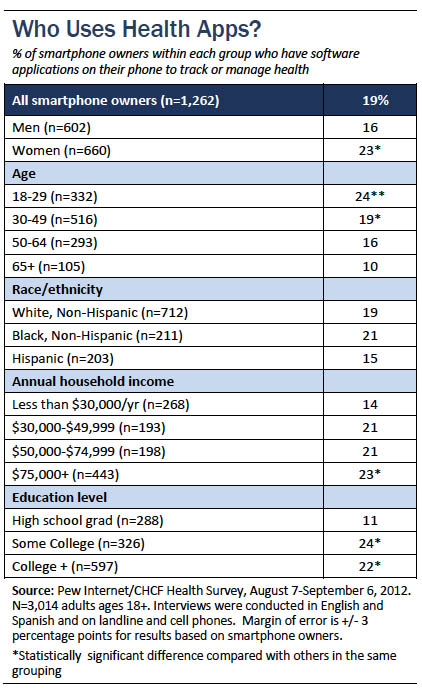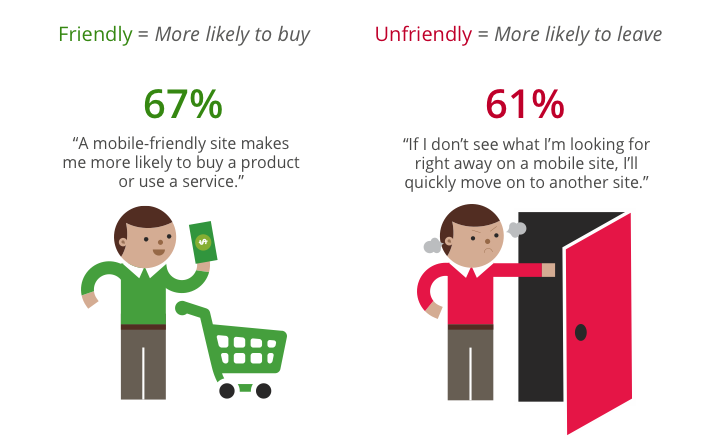Mobile Optimization Offers Better ROI Than Mobile Apps Best Practices for Beefing Up Pharma Brand Websites
By John Mack
 According to the Pew Internet and American Life Project “Mobile Health 2012” survey on the use of cellphones for healthcare, “half of smartphone owners use their devices to get health information and one-fifth of smartphone owners have health apps.”
According to the Pew Internet and American Life Project “Mobile Health 2012” survey on the use of cellphones for healthcare, “half of smartphone owners use their devices to get health information and one-fifth of smartphone owners have health apps.”
Pharmaceutical marketers who wear “rosy glasses” may take away from that top line synopsis, which appears as the subtitle of the survey report (find it here), that it is time to develop Rx branded health apps — such as adherence reminders — for consumers.
But if you look more deeply into the survey results, which I am sure you will do after reading this, you will find that only about 9% of U.S. Adults over the age of 18 (19% of the 45% of smartphone owners) “happen to have” apps that help them track or manage their health.
Keep in mind that “having” does not equate to “using” — we know from other surveys that the majority of these apps may have been used just a few times and then forgotten.
Also, 81% of those 9% have health apps that focus on general health areas such as:
- Exercise, fitness, pedometer or heart rate monitoring (includes specific types of exercise like running, ab workouts, yoga, etc.) – 38%
- Diet, food, calorie counter – 31%
- Weight – 12%
Other “uses” include “period or menstrual cycle” (7%), “blood pressure” (5%), and WebMD (4%).
These types of “health” apps are very broadly focused and indicate that there may not be much interest among consumers for brand-focused apps from the pharmaceutical industry. At best, those pharma companies that have products where maintaining a healthy diet is important — ie, diabetes drugs — will be able to justify developing non-branded diet-realted apps that compete with many other such apps.
So, on the one hand we have these disappointing numbers regarding mobile health apps. On the other hand, however, PEW reports that “in 2010, when the same percentage of U.S. adults owned cell phones, 17% of cell phone owners reported using their phones to access health information. Today, that number stands at 31%, almost double the previous figure.” That’s 31% of 85% of all U.S. adults over the age of 18, or 26% of all adults!
“Access health information” more or less refers to using the browser on the smartphone to access plain old websites. IMHO, this means that drug companies would be better off optimizing their websites for mobile access than putting money into the development, distribution, and support of “apps.” And, according to Klick Health, which is in the business of optimizing websites for mobile, “Google recently reported that 1 in 5 searches on Google are now from a mobile device. [Google] also asserted that ranking priority within mobile search results will be given to sites that are mobile optimized. This further underlines the need to ensure your website is optimized for mobile.” For some interesting statistics from Google, see “Mobile-friendly sites turn visitors into customers.”
Google took a deeper look at users’ expectations and reactions towards their site experiences on mobile. “Most interestingly,” said Google, “61% of people said that they’d quickly move onto another site if they didn’t find what they were looking for right away on a mobile site. The bottom line: Without a mobile-friendly site you’ll be driving users to your competition. In fact, 67% of users are more likely to buy from a mobile-friendly site, so if that site’s not yours, you’ll be missing out in a big way.”

“Sadly,” reported Michael Maher, Senior Vice President of Marketing at Digitas Health (here), “a 2011 Mediapost audit showed just 19% of pharma sites are mobile-optimized, and Google estimates only slightly higher at 21%.” A Digitas Health December 2011 survey found that of the top 25 pharmaceutical brands of 2010, only three had mobile websites specifically built to display on mobile browsers.
I wonder if the situation viz-a-viz pharma Web site mobile optimization has improved much in the last year.
Google’s GoMo Initiative: Mobilize your Site and Maximize your Advertising
10 things pharma can do to enhance the online brand experience
Meanwhile, plain old Rx branded websites continue to be an important asset for pharmaceutical companies. According to Comscore (here), “branded website visitation continues to have the greatest impact for both prospects and patients, yielding significant lifts not just in awareness, but also in favorability and conversion. Existing patients of a pharmaceutical brand who visited the brand site increased their refill rate by 14.7 percentage points compared to the control group. Prospects who visited a branded site also saw a positive increase of 8.9 percentage points in beginning treatment compared to those with no exposure to the site.”
“A significant focus for marketers now lies in understanding what drives patients and prospects to their branded sites,” says Richard Myer, a Healthcare Analyst at eMarketer and author of World of DTC Marketing Blog. “It could be, for example, when a patient receives an Rx or it could be the result of being exposed to DTC advertising but there is a lot more that pharma marketers can and should do to enhance the online brand experience.”
Aside from mobile Optimaization, Myer osuggests 10 other things pharma can do to “get serious about their branded websites” and enhance the online brand experience:
- Use different landing pages tied to different keywords.
- Use rollovers to help define complicated medical terms.
- Communicate in simple easy to understand terms that users can relate to.
- Talk more about the benefits vs. risks and stop trying to sell so hard.
- Use images of real people, not actors.
- Use callouts to highlight key brand messages.
- Give patients/visitors a reason to come back to your site. Update the content regularly especially when there is news on your product or health condition.
- Allow visitors to sign up when new information is available on your product such as label changes or new indications or warnings.
- Offer Rx discount cards. This is not up for debate anymore patients need help paying for medications.
- The content of your page(s) should never require patients to scroll down. The longer the content the higher the drop off rate of readers.
Finally, listen to this Pharma Marketing Talk conversation with Meg Columbia-Walsh, President of Augme’s Mobile Health Group, about the need for pharmaceutical companies to optimize their product websites for mobile browsers:
Listen to internet radio with Pharmaguy on Blog Talk Radio
PMN1110-02
Issue: Vol. 11, No. 10: November 2012



![6 Digital Tools at the Center of Healthcare Digitalization [INFOGRAPHIC]](http://ec2-54-175-84-28.compute-1.amazonaws.com/pharma-mkting.com/wp-content/uploads/2021/04/6DigitalTools_600px-218x150.jpg)




![6 Digital Tools at the Center of Healthcare Digitalization [INFOGRAPHIC]](http://ec2-54-175-84-28.compute-1.amazonaws.com/pharma-mkting.com/wp-content/uploads/2021/04/6DigitalTools_600px-100x70.jpg)




